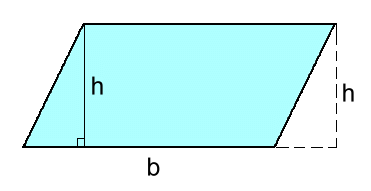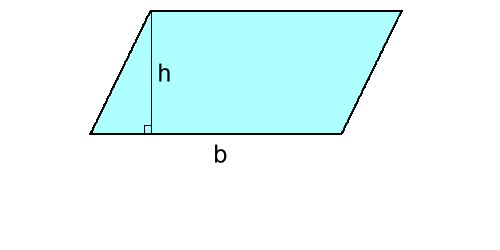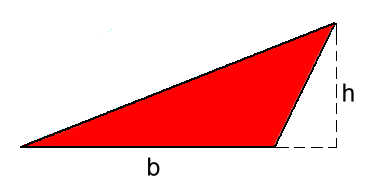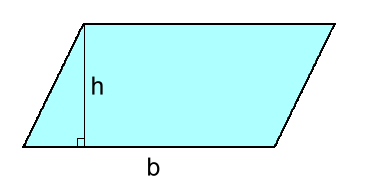 We've previously looked at the area of rectangles and the formula A = l·w. Now let's look at the more general case of the parallelogram. 
A parallelogram has opposite sides which are equal and parallel. The sides are usually labelled as base b and height h The area formula for a parallelogram is: A = b·h Here's why:  Moving a triangular piece from the left side to the right makes a rectangle.
Moving a triangular piece from the left side to the right makes a rectangle.The dimensions of the rectangle are b and h, equivalent to the length and width. So the area of the parallelogram is A = L·w or A = b·h 
Here's a triangle: A triangle's dimensions are the base b and the height h (which sometimes needs to be measured outside the triangle) The area formula for a triangle is Here's why: 
The triangle is half of the parallelogram. This will make its area half of b·h Move on to page two for some examples >>> |